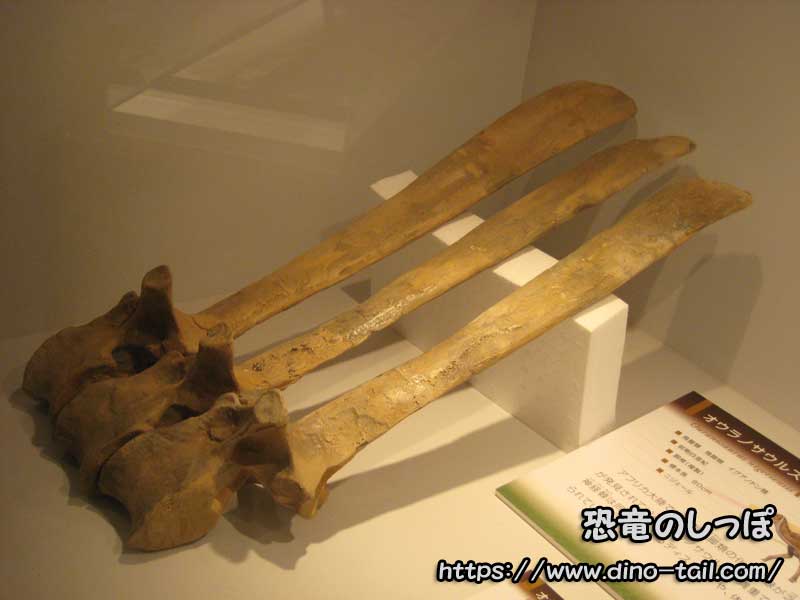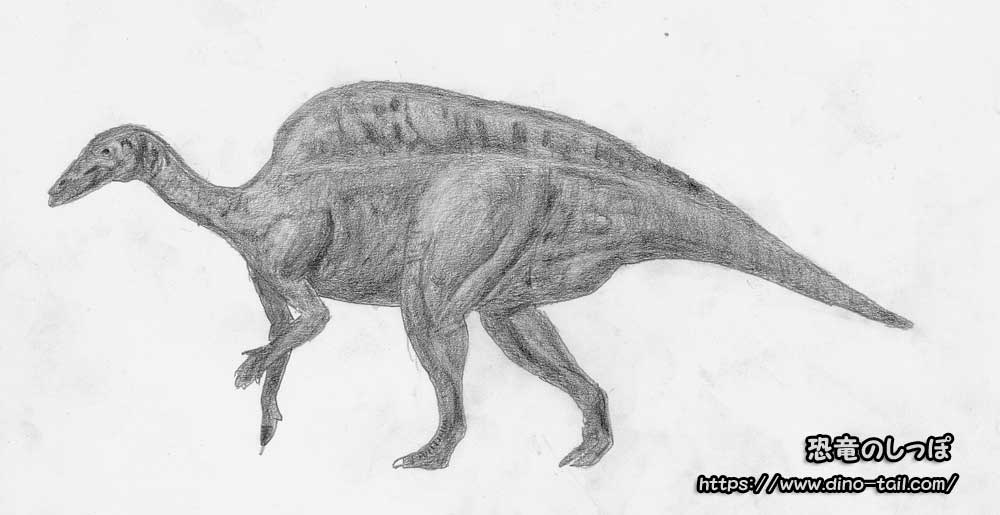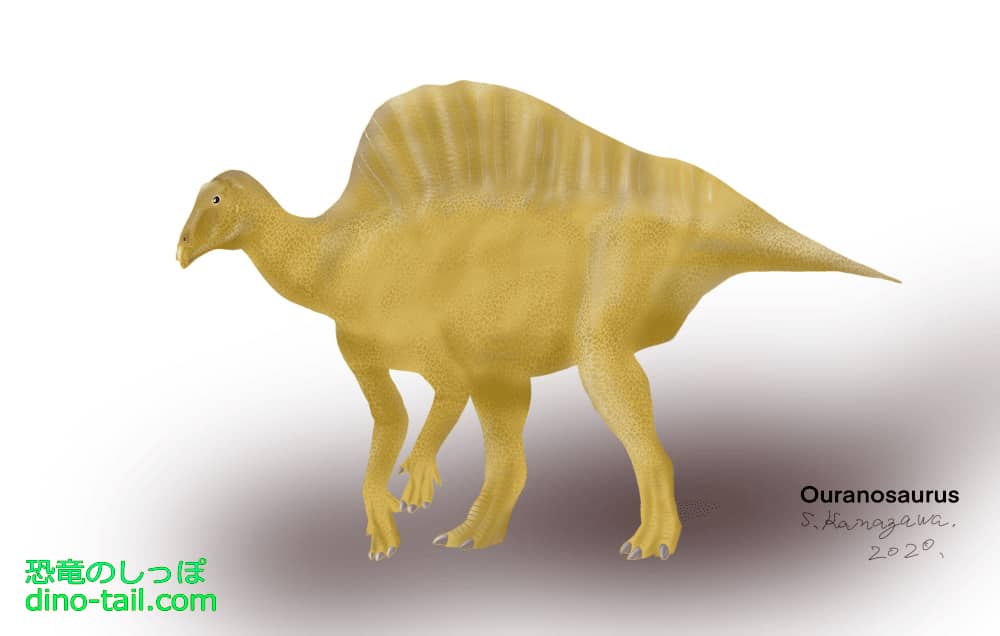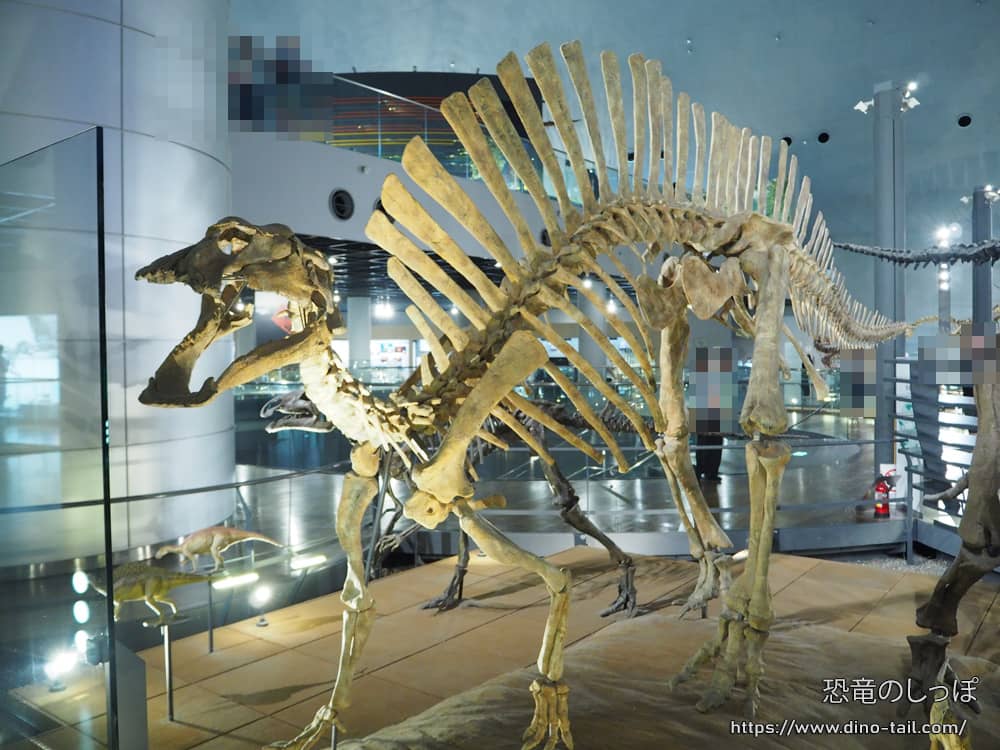About Ouranosaurus
| Scientific Name (Genus) | Ouranosaurus |
| Meaning of Name |
Brave lizard
ourane (brave) [Arabic] - saurus (lizard) [Greek] |
| Classification | Ornithischia, Ornithopoda (Hadrosauriformes) |
| Total Length | Approx. 7m |
| Diet | Herbivorous |
| Period | Early Cretaceous |
| Species | Ouranosaurus nigeriensis |
| Year of Paper Publication | 1976 |
| Genus Name Publication |
Géologie et paléontologie du gisement de Gadoufaoua (Aptien du Niger).
Cahiers de Paléontologie, CNRS, Paris. by Philippe Taquet. 1976. |
Features
The most distinctive feature of Ouranosaurus is the long neural spines extending from its backbone. There are two main theories about what this structure looked like.
- Sail theory: The traditional reconstruction, which suggests that a thin membrane of skin stretched between the bones to form a 'sail,' similar to Spinosaurus. By circulating blood through this sail, it could have functioned as a radiator for thermoregulation, warming the body in the sun and cooling it in the wind.
- Hump theory: A more recent and widely accepted theory is that the bony projections supported a muscular, fatty 'hump,' similar to that of a bison. This hump may have served to store nutrients to survive the dry season or as a display for species recognition.
Although it is not yet clear which theory is correct, there is no doubt that this back structure played an important role in the survival of Ouranosaurus.

The sail on its back was used for thermoregulation.
Ouranosaurus was primarily bipedal, but the tips of its forelimb fingers were hoof-shaped. It was likely able to walk or rest on all fours when necessary.
Its jaw strength does not seem to have been very strong.
Also, the thumb of its forelimb had a conical, sharp claw , although smaller than that of its relative Iguanodon. This may have been used to pull down plants or for defense against predators.

Ouranosaurus, excavated in Niger, West Africa, is a valuable specimen as one of the few complete skeletons of a large ornithopod from Africa. It was once thought to belong to the Iguanodontidae family, but this has now been revised, and it is included in the Hadrosauridae.


Discovery and Description Paper

The fossils of Ouranosaurus were discovered between 1965 and 1972 in a desert area called Gadoufaoua in Niger, West Africa, by an expedition led by the renowned French paleontologist Dr. Philippe Taquet.
Based on two exceptionally well-preserved skeletons, Dr. Taquet introduced this dinosaur to the world as a new genus and species in a comprehensive research paper published in 1976 ( Géologie et paléontologie du gisement de Gadoufaoua (Aptien du Niger). Cahiers de Paléontologie, CNRS, Paris. by Philippe Taquet. 1976. ). The main points of his paper are as follows:
Key Points of the Description Paper
- Naming of a new genus and species: Based on the fossils, the new genus and species Ouranosaurus nigeriensis was formally named.
- Detailed anatomical description: The features of the entire skeleton, including the very long neural spines on its back (the skeleton of the sail or hump) and the flat, duck-like snout, were recorded in detail with illustrations.
- Taxonomic position: At the time, it was classified in the Iguanodontidae family and concluded to be a close relative of Iguanodon. (*This classification was revised in later studies.)
- Consideration of the function of the 'sail': The main hypotheses that are still debated today, such as thermoregulation and display to its own kind, were first scientifically proposed for the back structure.
- Paleoenvironmental reconstruction: Not only Ouranosaurus but also the geology of the site and the fossils of crocodiles and turtles found alongside it were described, revealing the ecosystem of Early Cretaceous Africa.
This paper not only introduced the unique dinosaur Ouranosaurus to the world but also became a very important step in elucidating the ecosystem of the age of dinosaurs on the African continent.
